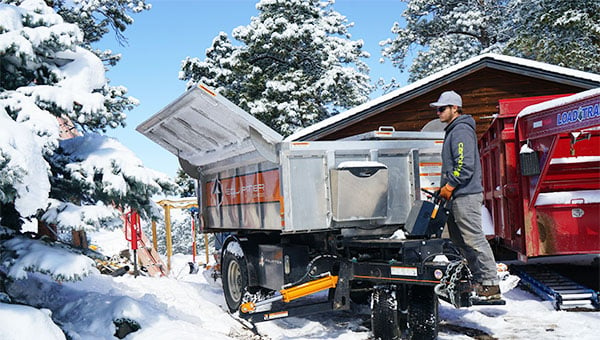As the weather changes in the Northern part of the country, roofers take on a new set of challenges when they have roofing jobs in the winter and homeowners have a new set of things to look for in a roof replacement job. Roofing in a cold climate requires some additional planning and the right set of tools to ensure that the process is efficient, safe, and effective. This blog post will cover how to plan for replacing a roof in the winter and what to look for as a homeowner.
In an ideal world, roof replacements should be scheduled during periods of milder weather conditions. If possible, plan the project for a time when the weather forecast calls for consecutive days of dry weather and bearable temperatures. In the case of emergency roof repair or replacement during the winter months, this may not be possible. Since there are less daylight hours during the winter, crews should plan accordingly for shorter work days or the necessity of external lighting for workers to work safely.
In addition to the tools a roofing crew would typically use on the job, there are some specialized tools made for colder weather that are designed to make working in challenging conditions safer and more efficient. For areas that receive a lot of snow, it may be necessary to clear a roof with roof snow rakes before a job. Once crews are on a roof, non-slip footwear is a critical piece of gear in order to prevent accidents and injuries.
Crews who frequently work in cold conditions will be familiar with thermal sealing for shingles. In order to ensure shingles create a tight bond and prevent water penetration, thermal sealing activates the ability of the shingle’s adhesive material to stick in the cold. When the thermal activation process is done correctly, a homeowner can have confidence in the long-term performance of their roof.
There are a few factors that homeowners should look for when replacing their roof in a cold climate. Have a professional check for adequate insulation. If you have an attic, you’ll want to see if the insulation your home currently has meets the R-value for the climate zone in which you live. The right amount of insulation will lower energy costs and reduce the risk of snow buildup or ice dams on your roof. Depending on your climate, you may want to select roofing materials that are designed to resist ice and snow or better withstand colder temperatures. Asphalt shingles with special coatings or synthetic roofing materials have a good track record for enduring cold climates.
Roofing professionals who have worked in areas that experience colder temperatures are familiar with how to do the job properly. When homeowners are looking to replace their roof in the winter, it is important to hire experienced, reputable contractors with a proven track record during winter jobs. Homeowners may want to inquire about warranty coverage for a new roof, particularly ones in challenging environments.
The Equipter 4000 is the debris management tool that has been trusted by roofers since 2004. With over 400 rental locations across North America, it is easy to find an Equipter rental close to you, even during the winter months.